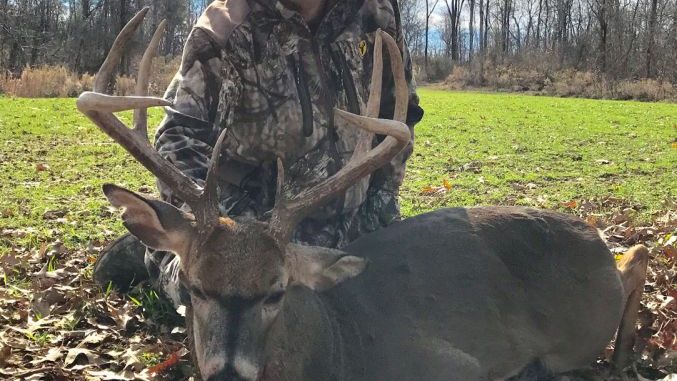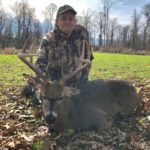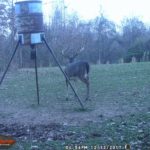
Key to successful hunting is keeping deer from knowing you’re around
This month, I’m going to touch on a subject that applies to deer hunting with any weapon: managing hunting pressure on your herd. In my opinion, no single factor is more important to your success in terms of seeing and harvesting deer — especially mature bucks.
Not everyone is fortunate enough to control the land where they hunt, and not every hunter is after a trophy buck, but I hope every reader can take something away from this that will help them have more success in the woods.Although I’m focusing on mature bucks, a mature doe is every bit as intelligent, and is also a worthy opponent. Every day in the woods is a learning experience, and the following are some things that I have personally found to be true.
Read and react
From the time it is born, a buck learns from and reacts to hunting pressure. For the first few years of its life, luck plays a large part in its survival. But if a buck makes it to 3½ years of age, it becomes almost a completely different animal when it comes to hunting — or even just laying eyes on one. These bucks have learned from their encounters with hunters, and were fortunate to survive that far.
Each encounter or close call causes the buck to eliminate the habit that exposed it to that danger. Let me be clear: A buck’s wariness or lack of daytime movement is a reaction to past negative stimuli caused by hunting pressure. By eliminating as many of these negative stimuli as possible, the bucks on a given property will often become more visible and easier to pattern effectively.
Many times over the years, I have had customers walk into our archery shop and tell me all about “Old Split Toe,” the huge buck that haunts their trail-camera images — but only in the middle of the night. It could be the buck is bedded a long way from their property, but oftentimes it’s due to sloppy hunting habits or excessive traffic that can be corrected or reduced.
Tree-stand or ground-blind location is key to minimizing pressure. Ask any hunter who consistently harvests mature bucks, and a majority will tell you the most-important factor in stand location is access. Being able to sneak in and out of your stand area undetected by deer is huge. Let’s say you have a tree stand in the highest deer-traffic area on your property, but you have to walk through a bedding area to access it. Or you have to climb down into a field full of feeding deer to leave that stand at dark. You’ve just shot yourself in the proverbial foot, with not much chance of success — but very good odds of educating a lot of deer to the fact they’re being hunted. It won’t take long for the herd to adjust and feed elsewhere, or become nocturnal. A better option would be to relocate the first stand to an area of lower deer traffic — but with better hunter access. In the case of the evening field-edge stand, having someone else pick you up by driving in with a vehicle would be a better option.
Scent control
Managing human scent is another key to minimizing pressure on your herd. Your scent can linger long after you leave the area, and deer are not fans of it, believe me. Showering with scent-free soap before each hunt, washing clothing properly, wearing scent-control clothing and/or the use of an ozonator all help to minimize your “human scent footprint.”
I’m always amazed at how many hunters don’t play the wind to their advantage. Hunting a stand on the wrong wind is taking a huge gamble, and usually results in an unsuccessful hunt and an educated deer herd. Study the wind carefully and use it to your advantage — deer definitely use it to theirs. I use the Weather Channel’s hourly forecast, which shows wind speed and direction, to anticipate the winds. That way, I don’t have to climb down in mid-hunt because of an unexpected wind shift.
If you reduce pressure on you herd, you should enjoy greater numbers of both deer sightings, and harvests. White-tailed deer are far better at patterning hunters than most people realize, because their survival depends on it. Use low impact hunting tactics and scent control to increase your future success.
A buck called ‘Saban’
We have been naming our bucks after SEC coaches lately. The top buck on our hit list was a deer we named Saban. As LSU fans, we wanted to outsmart him the most. For three years, he avoided us, with only a few trail camera images each year, mostly at night. This shows how adept these animals are at patterning hunters. Even so, by managing hunting pressure, we were able to close the deal, and the old buck’s luck finally ran out. This was a gun hunt, due to the necessity of accessing and exiting the field without bumping deer that were feeding there daily.




